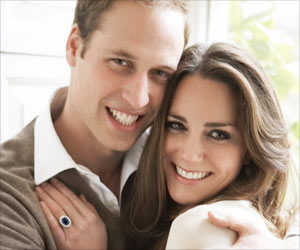Fashion industry alone is not to blame for anorexic disorders. Psychological support is badly needed by anorexics, says a British woman who was nearly killed by the disease.
Many would think that it is the fashion industry and the so-called craze for “size zero” models that is driving women to invite anorexic practices.
But Naomi Hooke of UK says it is wrong to believe that the fashion industry causes eating disorders is to completely misunderstand this most complex of illnesses.She had suffered from anorexia to varying degrees since she was 11. “I was in the grip of anorexia nervosa for more than eight years, but with a lot of help from family, friends and professionals I was able to turn my life around,” she says in a first person account in a newspaper.
Anorexia has often been perceived as a quest for model-like beauty, as a teenage fad or as a diet gone wrong. It has even been described as a lifestyle choice. Seldom is anorexia acknowledged as the life-threatening medical condition that it is, she regrets and asserts that many anorexics detest their bodies, refusing even to pose for family holiday snaps.
“At 11, I was showing early signs of puberty, and the prospect of an adult life ahead terrified me. I was afraid of responsibility, of a time when I would have to face the world without my parents' hands to hold.
“I, like many of the eating disorder patients I have met, never sought beauty; instead, I spent years trying to make myself look as ill as possible in order to avoid male attention,” she says.
She would trace a part of her problem to the bullying she had to endure in school which, she says, further exacerbated her already low self-esteem, making the eating disorder worse. She was scared of men and sex most.
Advertisement
“I had never felt so ill; the pain was excruciating. My memories of this hellish period are sketchy, but I have since been told that my kidneys were failing and that I was at risk of cardiac arrest. I had many meetings with the doctors, and eventually I agreed to be fed via nasal gastric tube. It was horrible when they passed the tube, though deep down I know it probably saved my life,” says.
Advertisement
Having hopefully got over it all, Hooke seeks to dispassionately analyze the problems of the anorexics and apprehends blaming it all on the fashion industry alone would be doing a disservice to the people affected by the disorder because of various factors.
Possibly young girls with existing eating disorders are selected by modelling agencies because of their tiny figures. But, although the fashion industry may be rife with anorexia, the majority of eating disorder patients have not become ill through catwalk influences. And nor are they all models.
The British Fashion Council's guidelines will go some way to protect the models themselves (of whom 40 per cent are said to suffer from eating disorders), she acknowledges, but thinks banning models with a body mass index (BMI) under 18.5, as they did in Madrid, and the health certification scheme proposed in Britain are both misconceived.
Although BMI can offer a crude measure of physical health, it can never quantify psychological distress. Despite popular belief, low weight is not the only danger of eating disorders, she asserts.
“There have been times in my life in which my BMI has been in the healthy range and yet my eating behaviours and mental state were far from healthy. I would starve myself for days on end before my body gave in to the pains of hunger and I would binge, after which I would feel so disgusted with myself that I would make myself vomit and/or cut myself with razor blades.
As for doctors' certificates, it takes considerable time and skill to assess whether an individual has an eating disorder, not least because sufferers often go to great lengths to hide their illness. I've been there, told the lies and tricked the scales,” she says and stresses only adequate psychological support would offer a way out.
Source-Medindia
GPL/C





